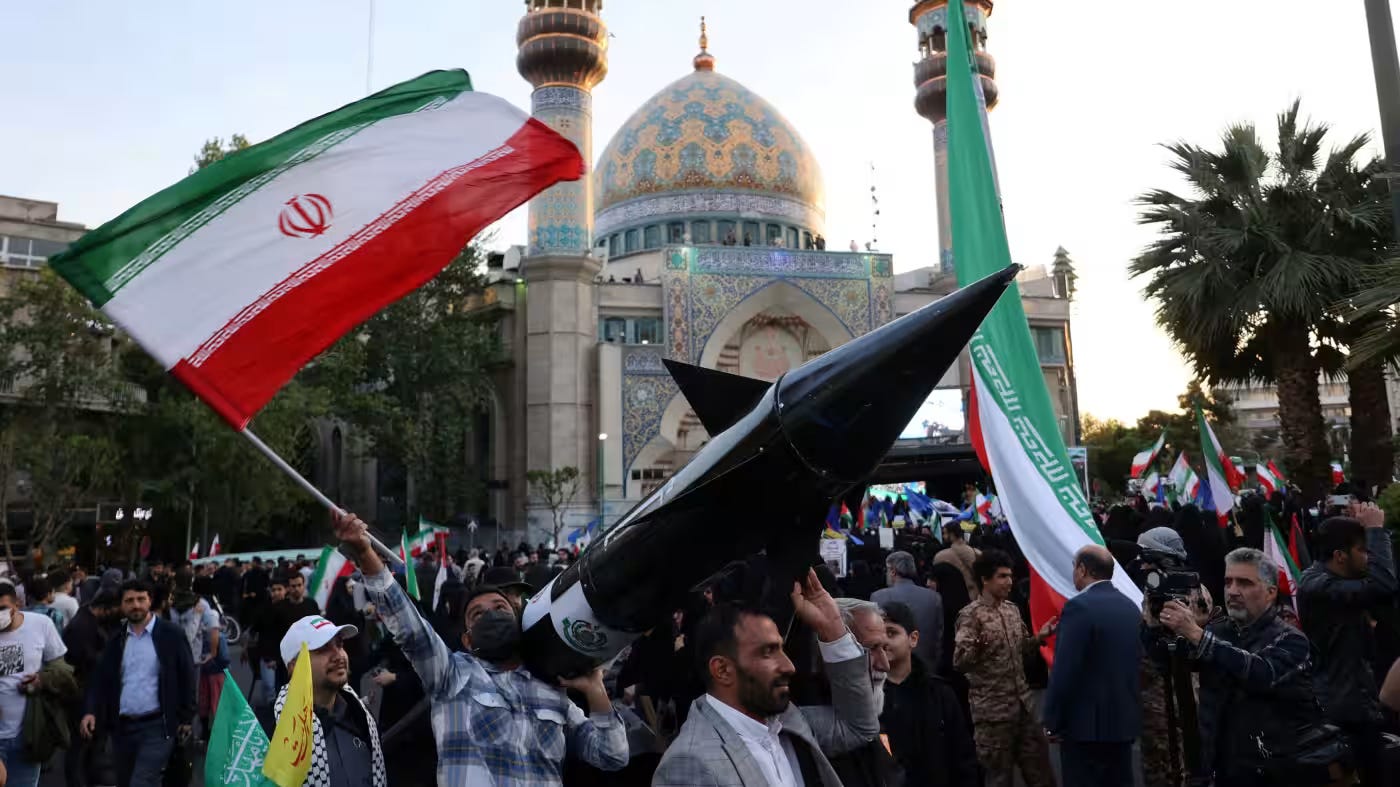Suspending the Rule of Tolerable Violence
Israel’s Attack and Iran’s Retaliation

The Middle East has, for some time, been a powder keg where degrees of violence are tolerated with ceremonial mania and a calculus of restraint. Assassinations can take place at a moment’s notice. Revenge killings follow with dashing speed. Suicide bombings of immolating power are carried out. Drone strikes of devastating, collective punishment are ordered, all padded by the retarded notion that such killings are morally justified and confined.
In all this viciousness, the conventional armed forces have been held in check, the arsenals contained, the generals busied by plans of contingency rather than reality. The rhetoric may be vengeful and spicily hysterical, but the states in the region keep their armies in reserve, and Armageddon at bay. Till, naturally, they don’t.
To date, Israel is doing much to test the threshold of what might be called the rule of tolerable violence. With Iran, for instance, it has adopted a “campaign between the wars,” primarily in Syria. For over a decade, the Israeli strategy was to prevent the flow of Iranian weapons to Hezbollah, intercepting weapons shipments and targeting storage facilities. “Importantly,” writes Haid Haid, a consulting fellow for Chatham House’s Middle East and North Africa Programme, “Israel appeared to avoid, whenever feasible, killing Hezbollah or Iranian operatives during these operations.”
But the state of play has changed. The Gaza War, which has become more the Gaza Massacre Project, has moved into its seventh month, packing morgues, destroying families and stimulating the terror of famine. Despite calls from the Israeli military and various officials that Hamas’s capabilities have been irreparably weakened (this claim, like all those battling an idea rather than just a corporeal foe, remains refutable and redundant) the killings and policy of starvation continues against the general Palestinian populace. The International Court of Justice interim orders continue to be ignored, even as the judges deliberate over the issue as to whether genocide is taking place in the Gaza Strip. The restraints, in other words, have been taken off.
The signs are ominous. Spilt blood is becoming hard currency. Daily skirmishes between the IDF and Hezbollah are taking place on the Israeli-Lebanon border. The Houthis are feverishly engaged with blocking and attacking international shipping in the Red Sea, hooting solidarity for the Palestinian cause.
On April 1, a blood crazed strike by Israel suggested that rules of tolerable violence had, if not been pushed, then altogether suspended. The attack on Iran’s consular offices in Damascus by the Israeli Air Force was tantamount to striking Iranian soil. In the process, it killed Brigadier General Mohammad Reza Zahedi and other commanders of the Iranian Revolutionary Guard Corps (IRGC), including Zahedi’s deputy, General Haji Rahimi. Retaliation was accordingly promised, with Iran’s ambassador to Syria, Hossein Akbari, vowing a response “at the same magnitude and harshness.”
It came on April 13, involving 185 drones, 110 ballistic missiles and 36 cruise missiles, all directed at Israel proper. Superficially, this looks anarchically quixotic, streakily disproportionate. But Tehran went for a spectacular theatrical show to terrify and magnify rather than opt for any broader infliction of damage. Israel’s Iron Dome system, along with allied powers, could be counted upon to aid the shooting down of almost all the offensive devices. A statement had been made and the Iranians have so far drawn a line under any further military action. What was deemed by certain pundits a tactical failure can just as easily be read as a strategic if provocative success. The question then is: what follows?
The Israeli approach varies depending on who is being asked. The IDF Chief of Staff, General Herzi Halevi, stated that “Israel is considering next steps” declaring that “the launch of so many missiles and drones to Israeli territory will be answered with retaliation.”
National Security Minister Itamar Ben Gvir was taloned in his hawkishness, demanding that Israel launch a “crushing” counterattack, “go crazy” and abandon “restraint and proportionality,” “concepts that passed away on October 7.” The “response must not be a scarecrow, in the style of the dune bombings we saw in previous years in Gaza.”
Cabinet minister Benny Gantz, who is a voting member of the war cabinet alongside Prime Minister Benjamin Netanyahu and Defence Minister Yoav Gallant, is tilting for a “regional coalition” to “exact the price from Iran, in the way and at the time that suits us. And most importantly, in the face of the desire of our enemies to harm us, we will unite and become stronger.” The immediate issues for resolution from Gantz’s perspective was the return of Israeli hostages “and the removal of the threat against the residents of the north and south.”
Such thinking will also be prompted by the response from the Biden administration that Netanyahu “think very carefully and strategically” about the next measures. “You got a win,” President Joe Biden is reported to have told Netanyahu. “Take the win.” US Secretary of State Antony Blinken has also expressed the view that, “Strength and wisdom must be the two sides of the same coin.”
For decades, Israel has struck targets in sovereign countries with impunity, using expansive doctrines of pre-emption and self-defence. In doing so, the state always hoped that the understanding of tolerable violence would prevail. Any retaliation, if any, would be modest, with “deterrence” assured. With the war in Gaza and the fanning out of conflict, the equation has changed. To some degree, Ben Gvir is right that concepts of restraint and proportionality have been banished to the mortuary. But such banishment, to a preponderant degree, was initiated by Israel. The Israel-Gaza War is now, effectively, a global conflict, waged in regional miniature.



